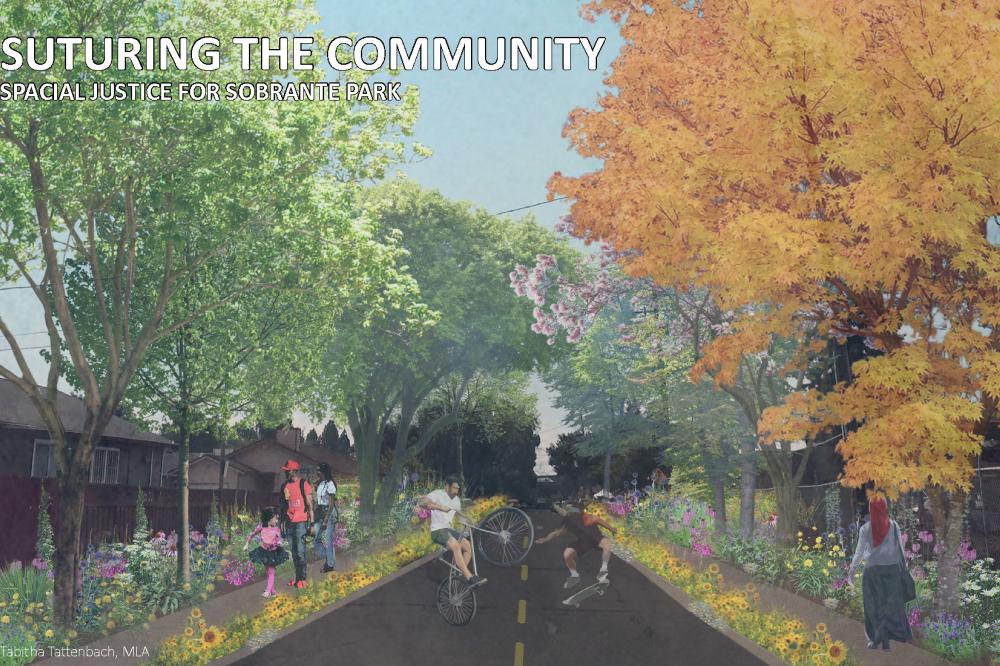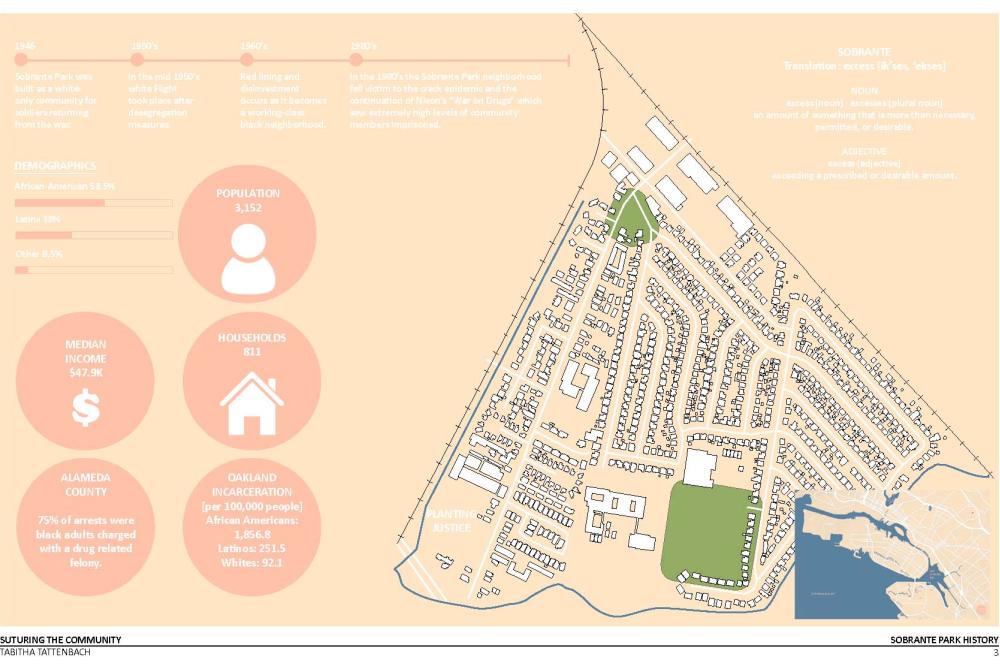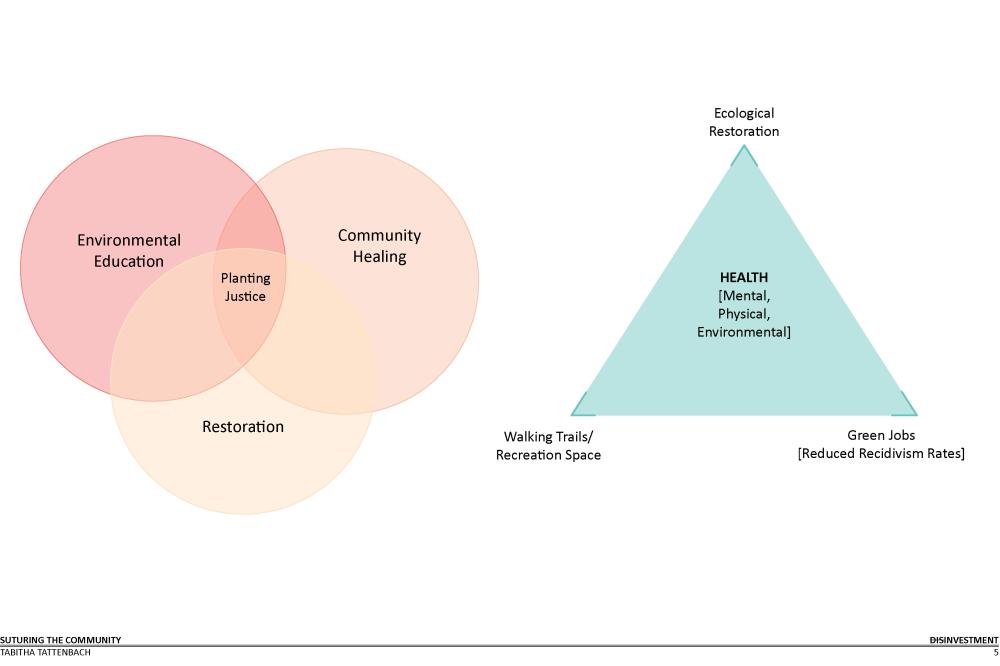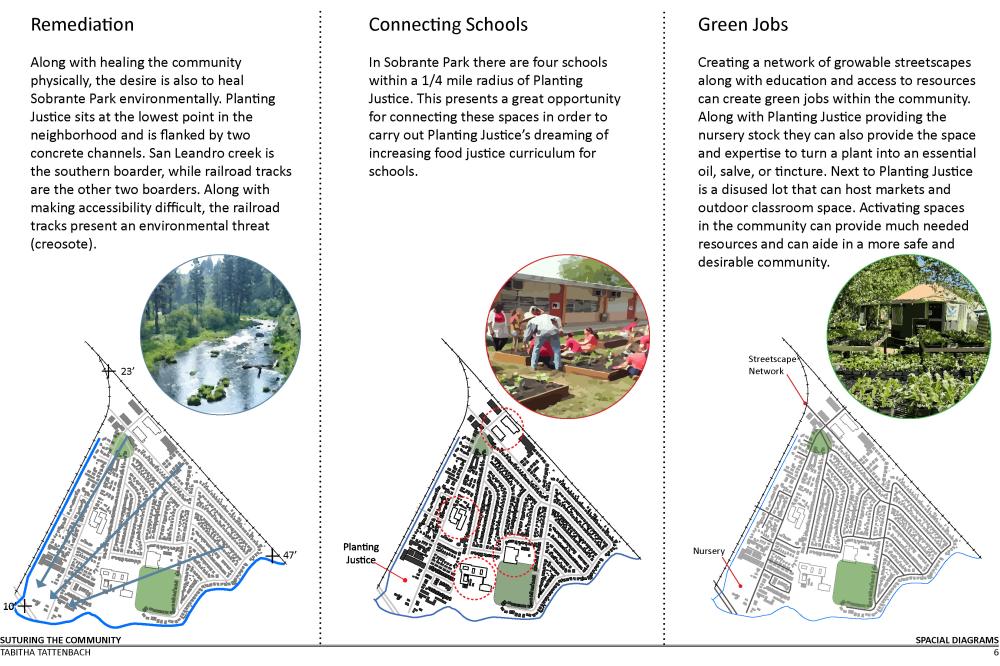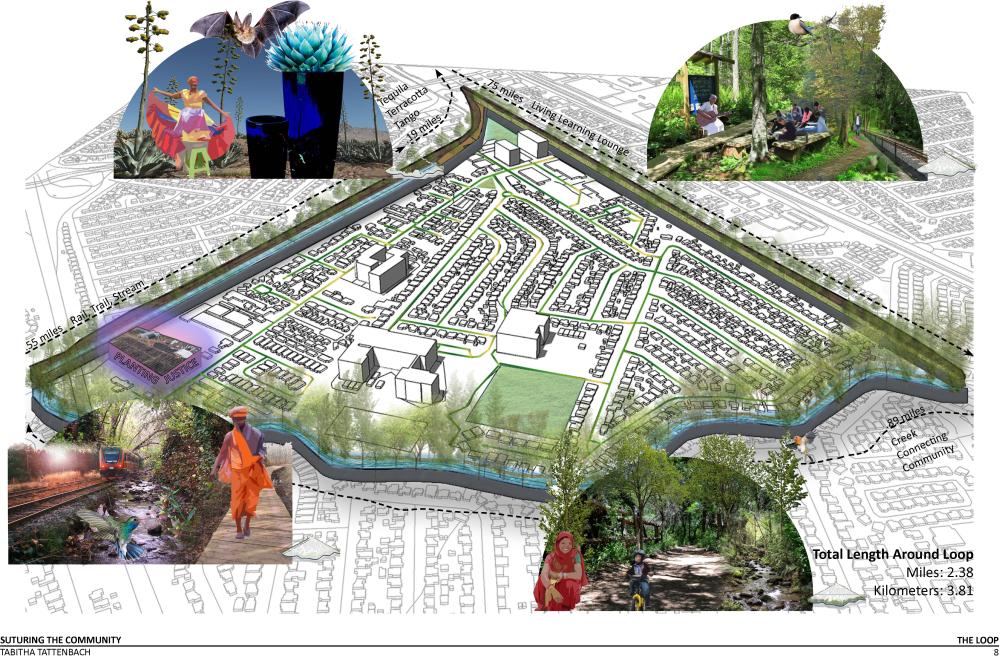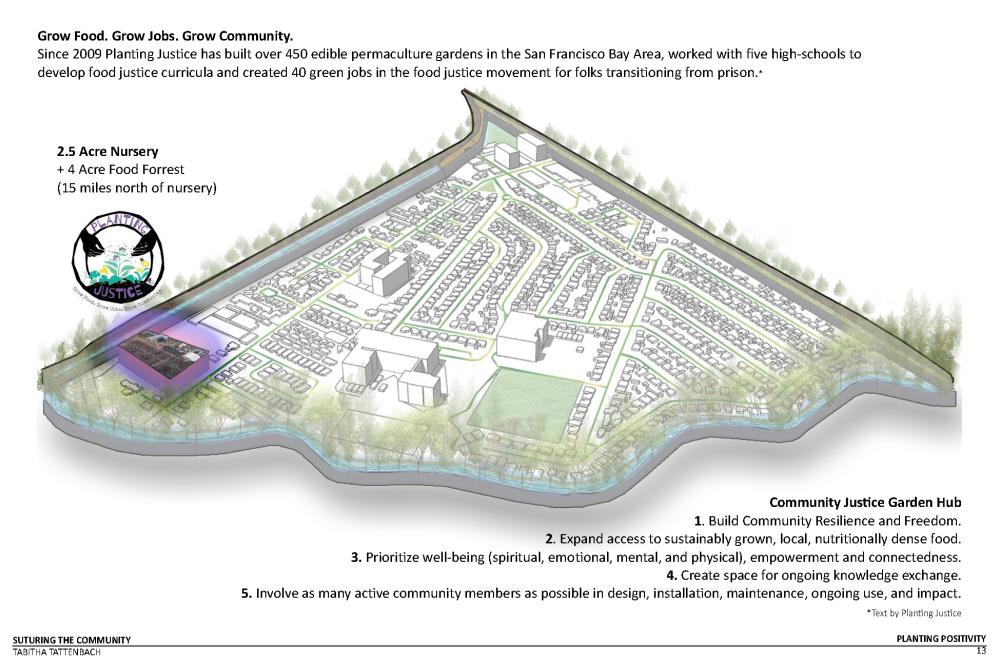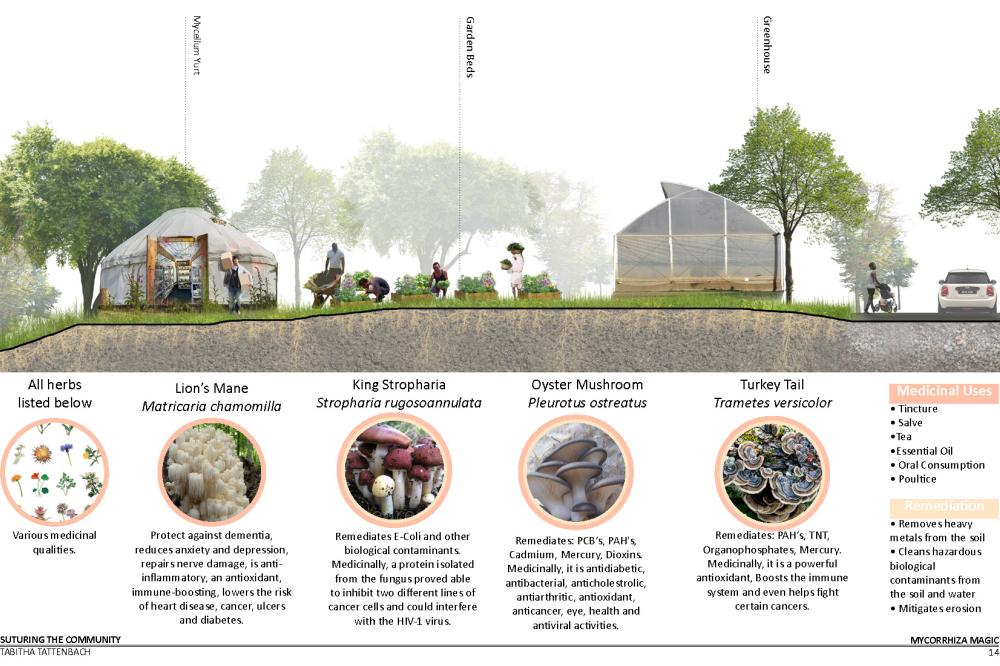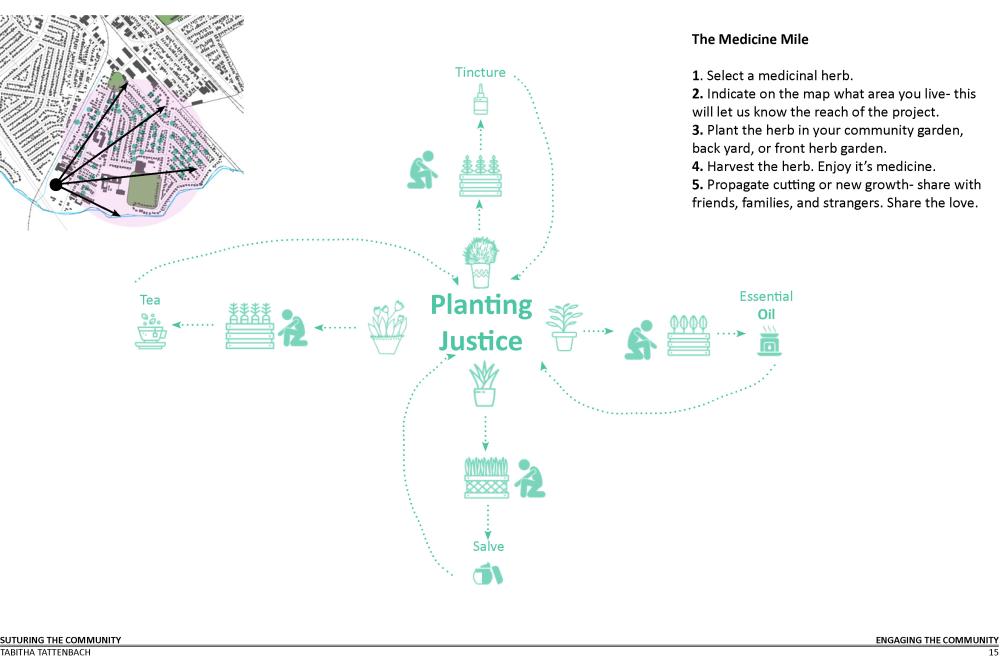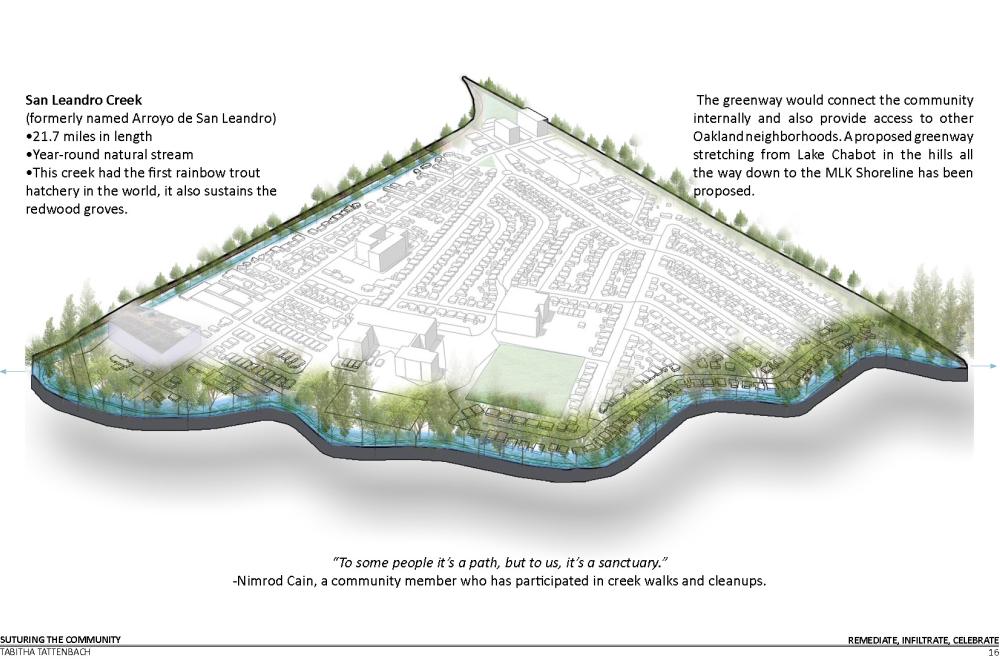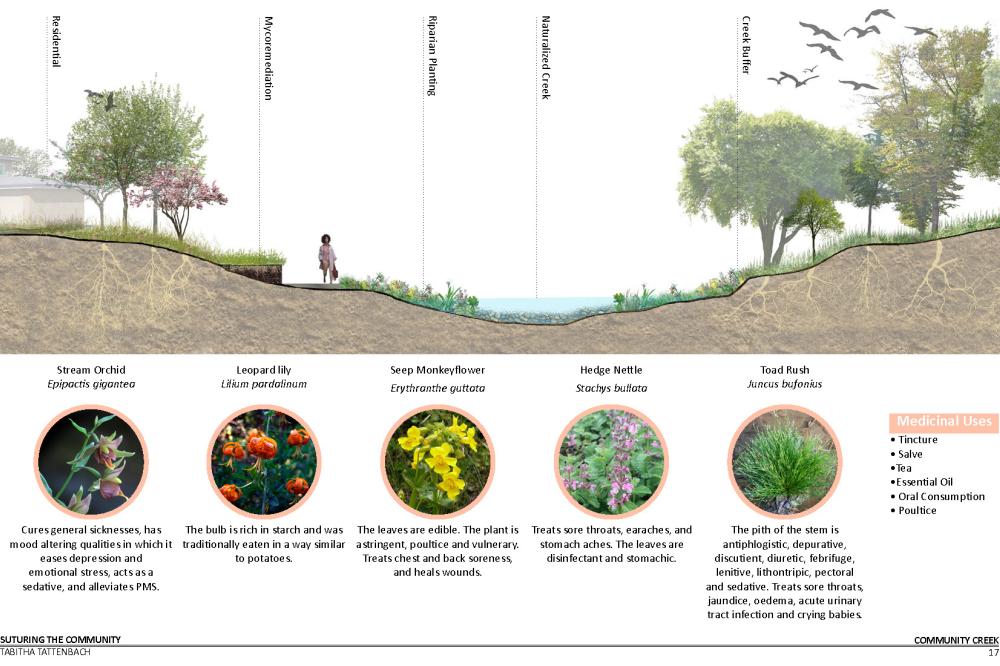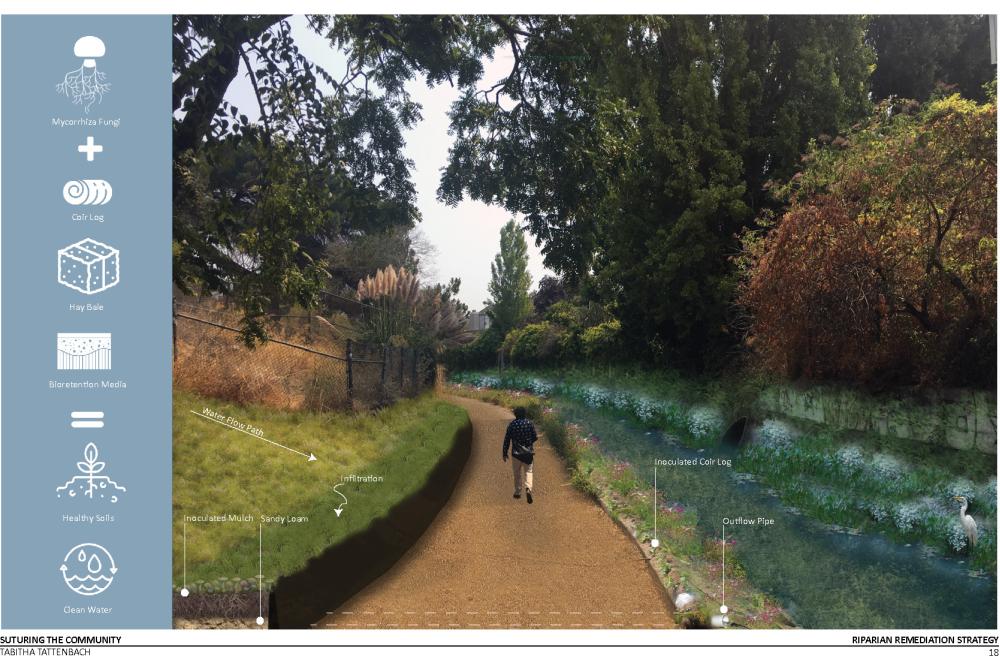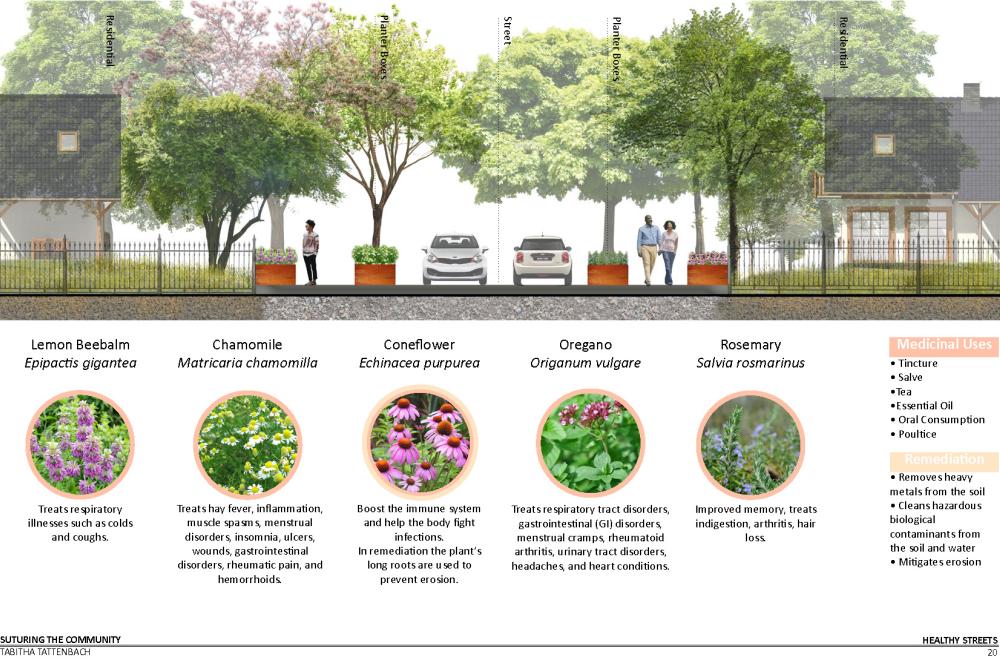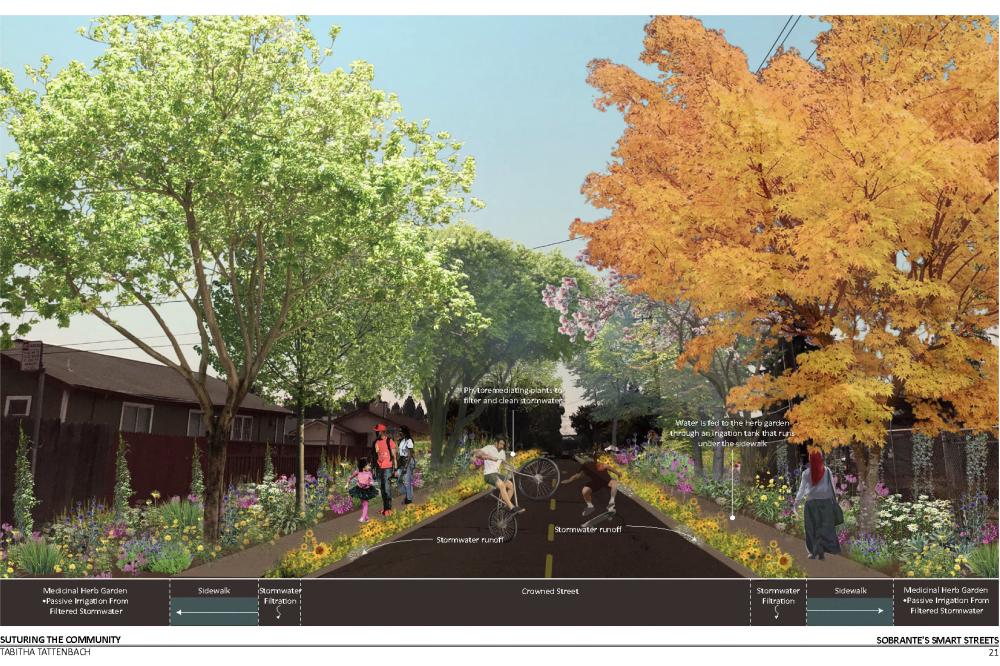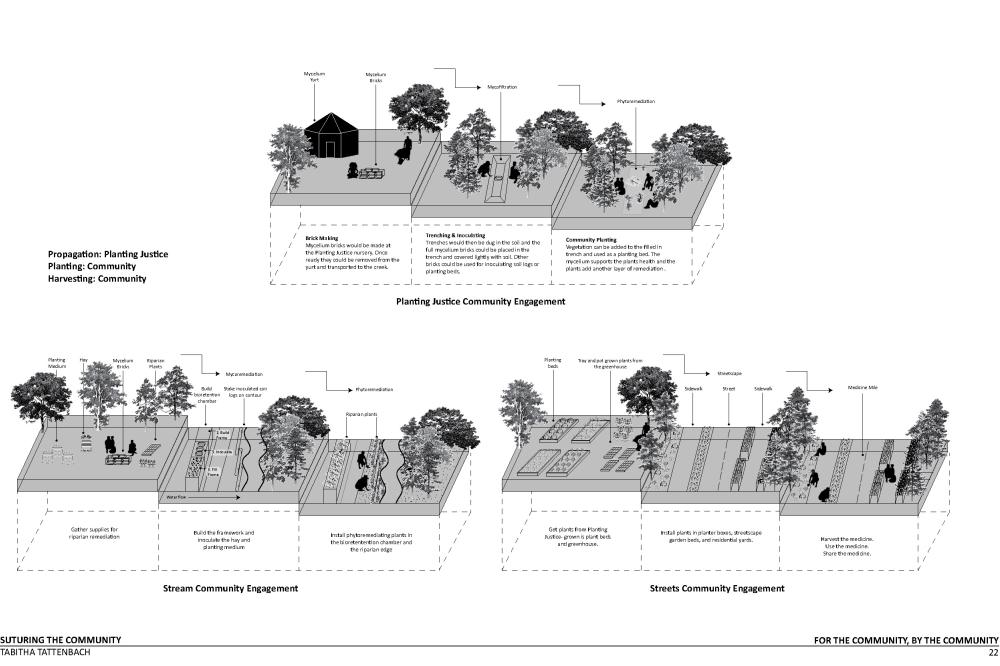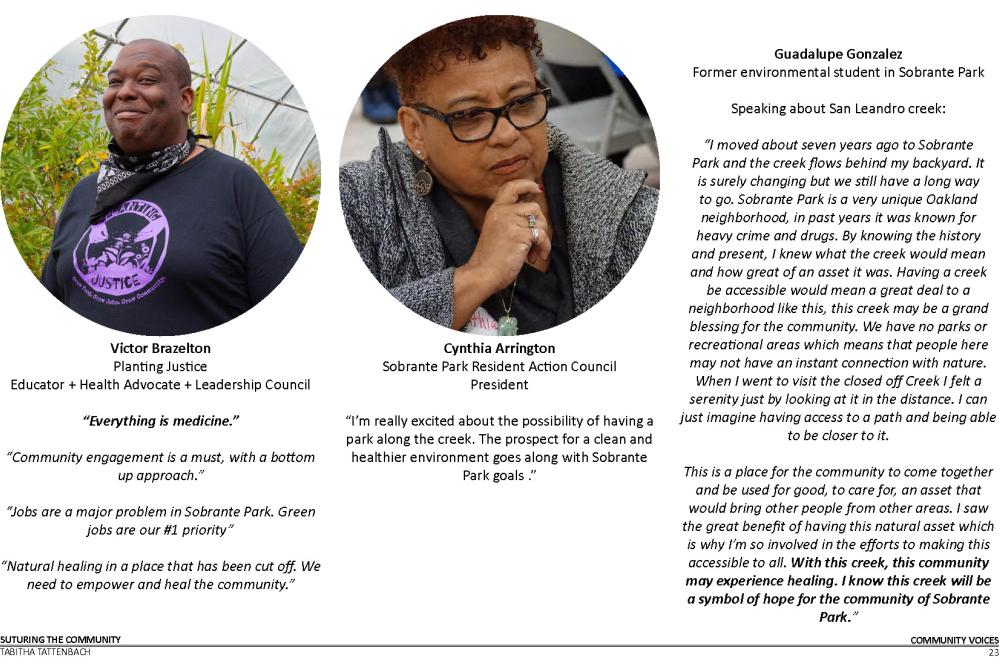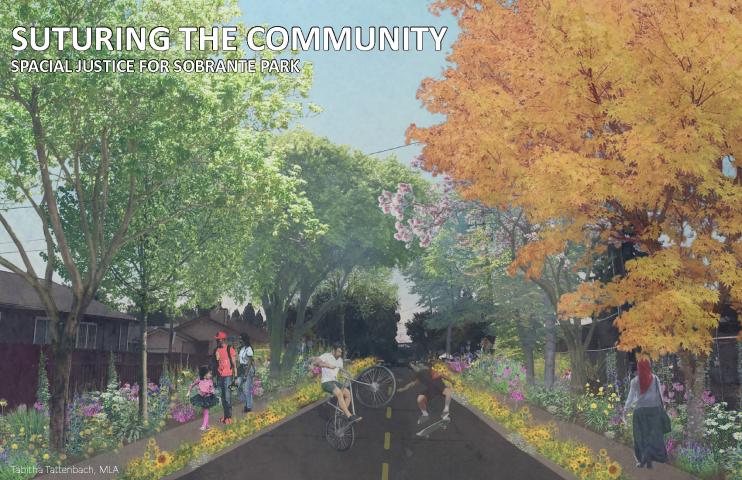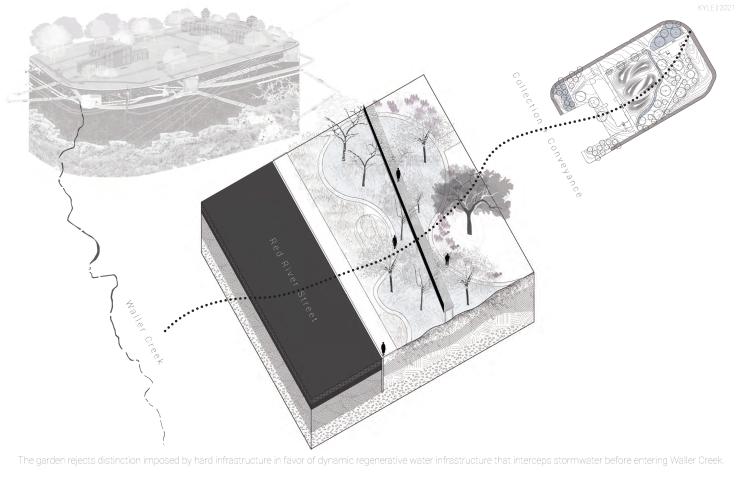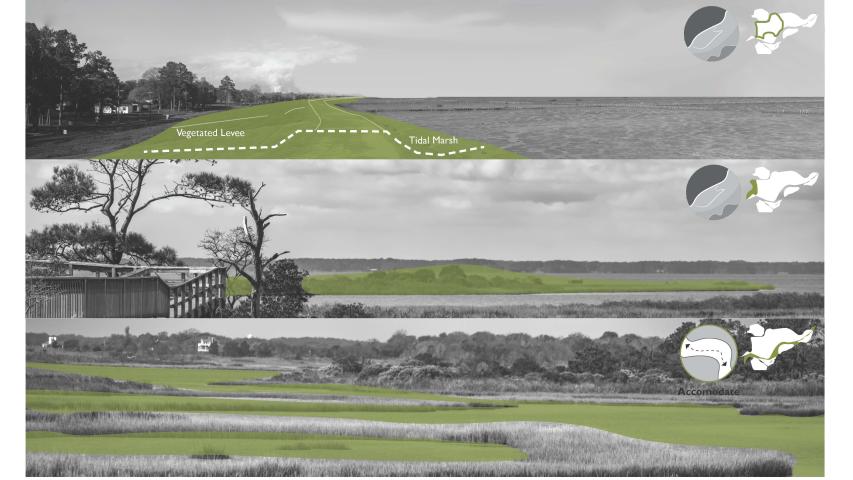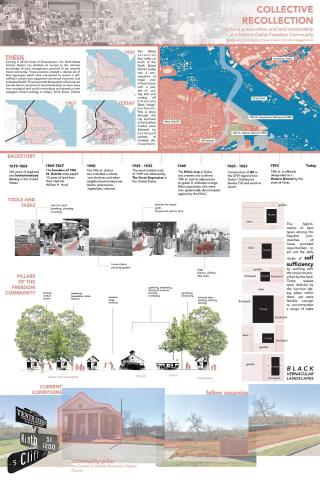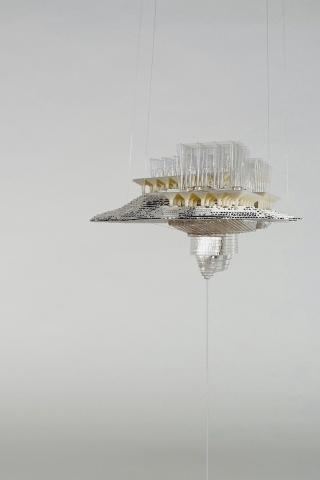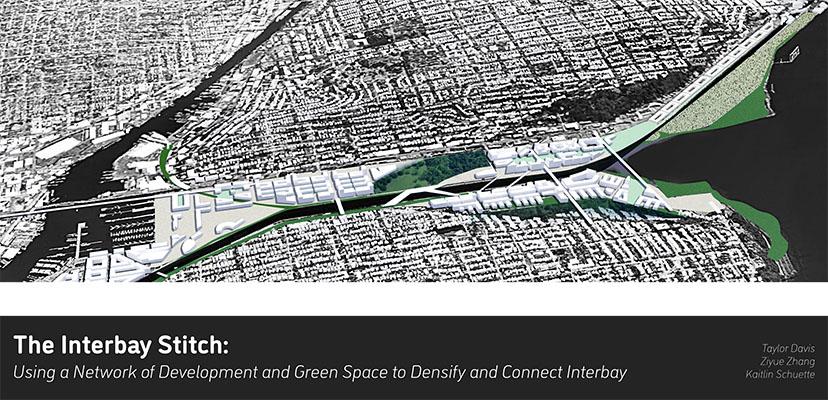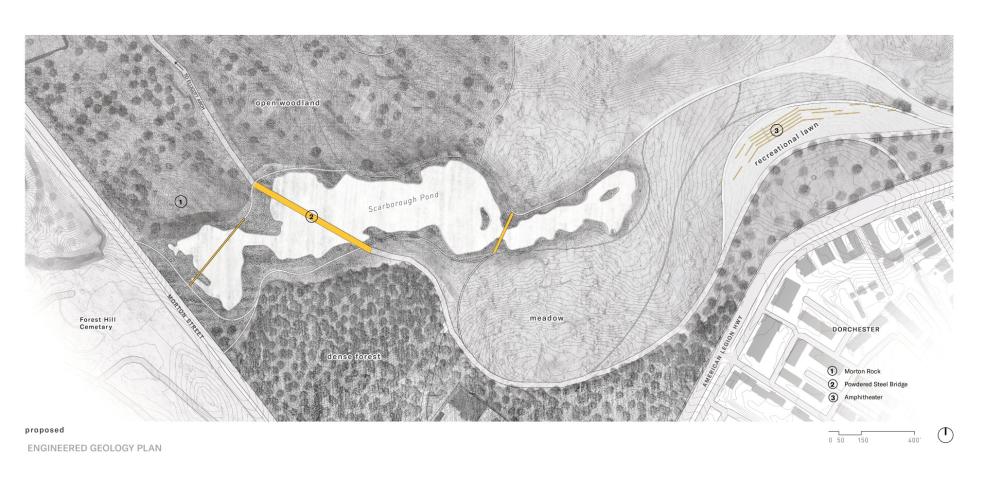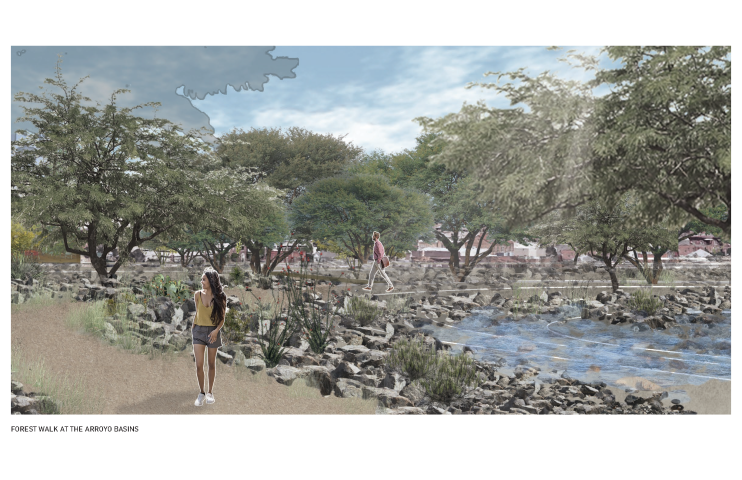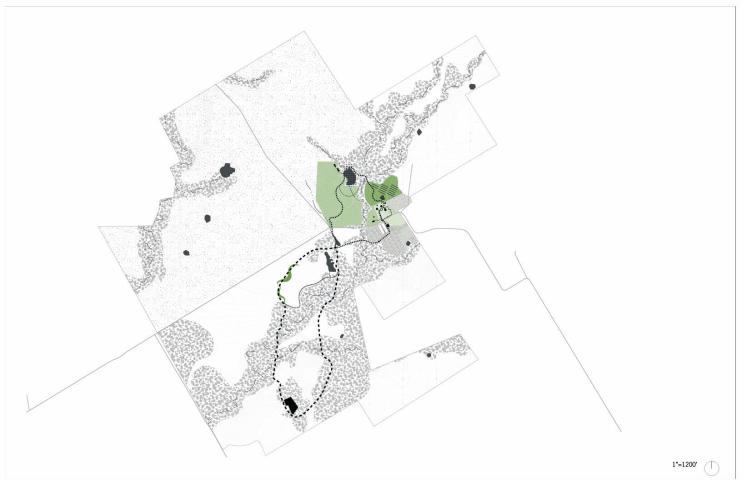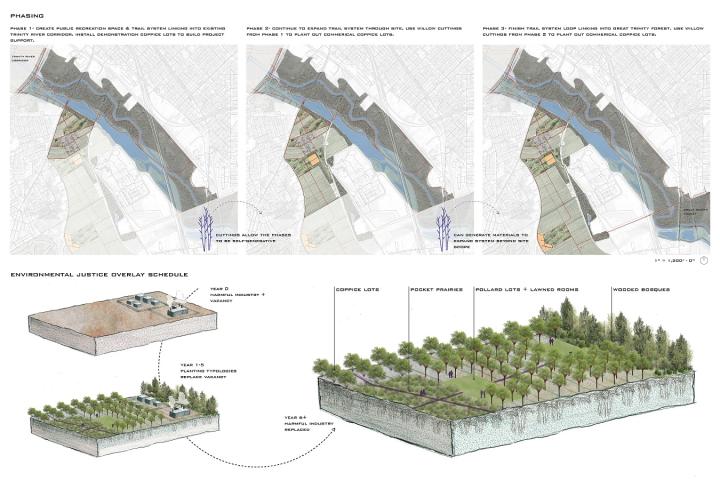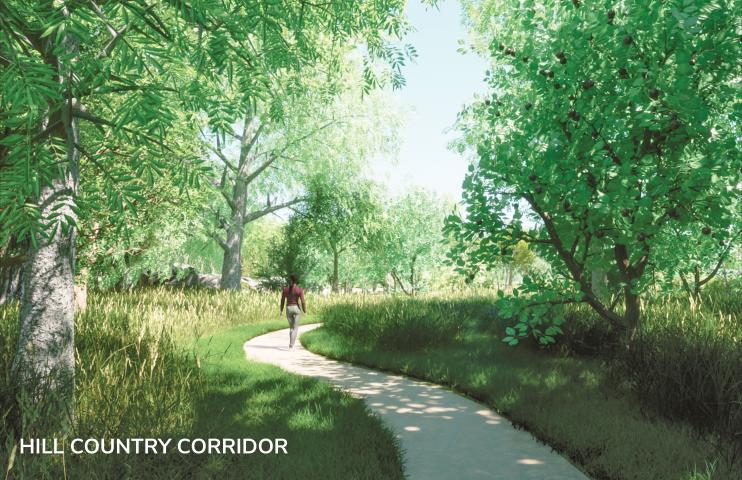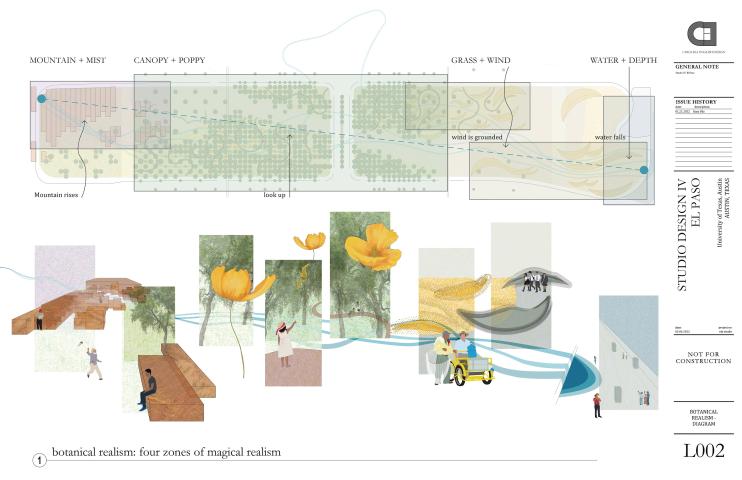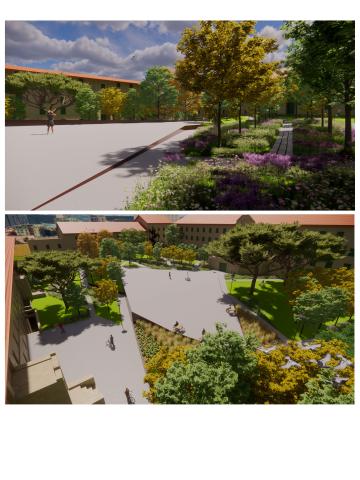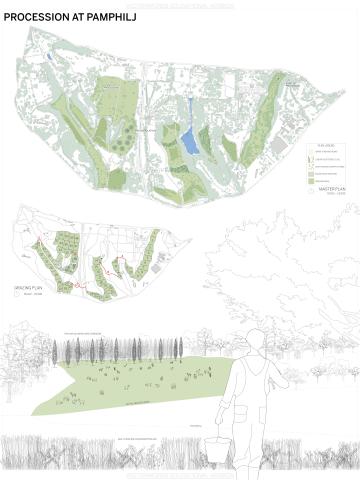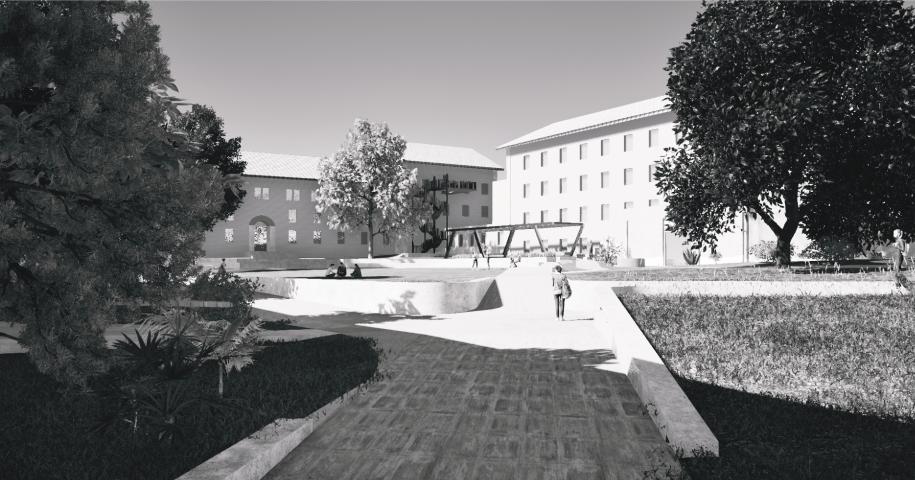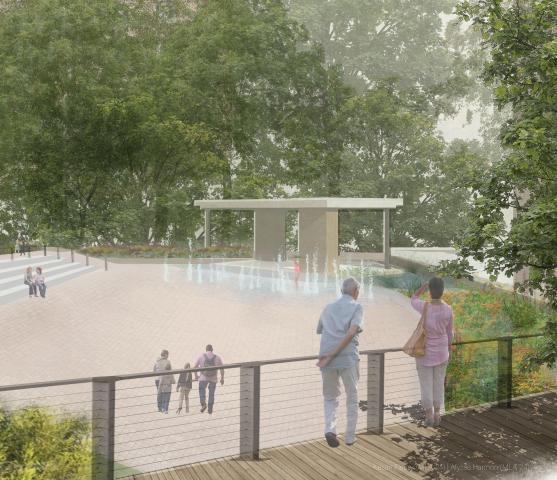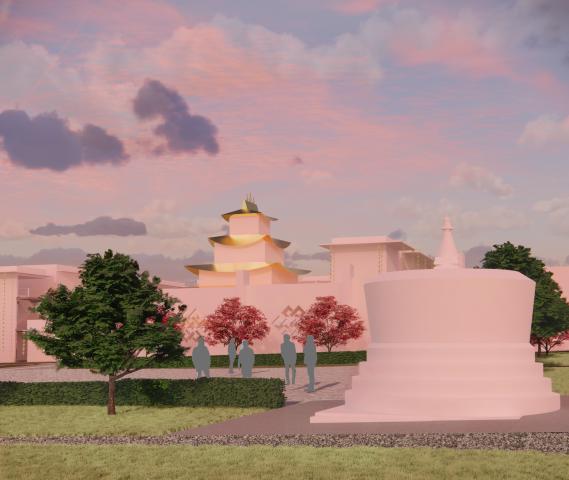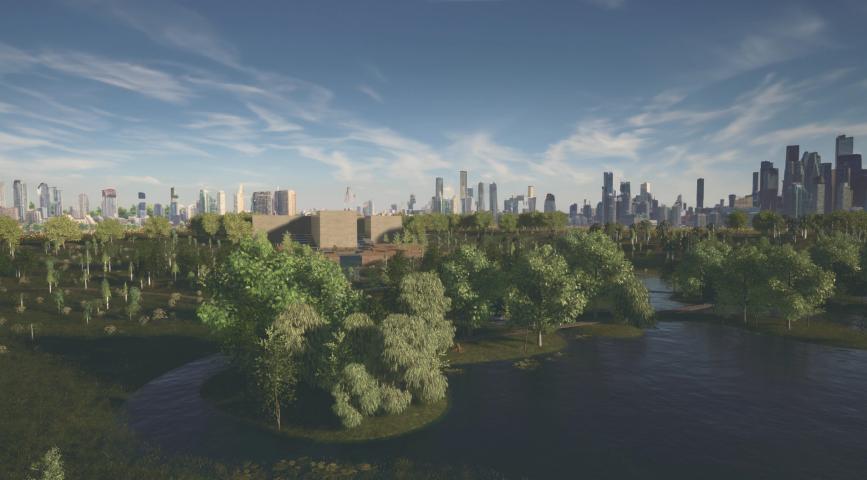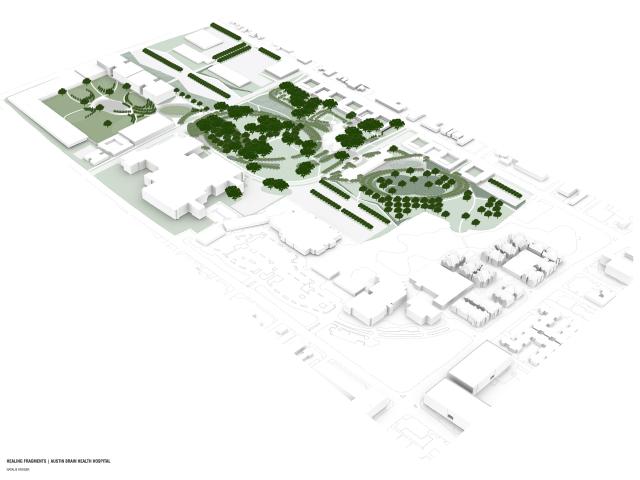Studio Description:
The studio examined the potential for landscape architecture to be a tool and forum for activism, remediation, advocacy, and restoration. Against the current backdrop of society’s reckoning with systemic inequities, the landscape is a vehicle for healing and empowerment. Students explore strategies for amplifying the mission of the Planting Justice organization through spatial design and materiality. The organization and commercial nursery is the training ground to develop nursery skills for people in and out of the prison system. The studio also addressed issues of historic segregation in urban form, including complex traffic infrastructure and watershed/stormwater systems.
Project Description:
Sobrante Park in East Oakland is the subject for ‘Suturing the Community.” The design proposal fashioned as a kit-of-parts strategically intervenes across the extent of the community with various combinations of ecological restoration, physical recreation, and landscape-based employment opportunities.
The Kit Components
1. The Miracle Mile: An remediating and agricultural armature that supports Planting Justice’s goal of growing medicine for the whole community. The loop directly harnesses Planting Justice’s desire and ability to act as a nursery and distribute medicinal plants. Mycology is the foundation for the Miracle Mile.
2. Circulation: A new linear residential park network that maximizes green space, safety, and mobility. The expanded circulation network aids Planting Justice’s environmental education curriculum by physically connecting schools and providing hands-on learning opportunities.
3. Local Economy: Planting Justice’s primary goal is access to green jobs for formerly incarcerated community members as a means to reduce recidivism. Green job creation includes a nursery, landscape maintenance, instruction, and a proposed medicinal economy. New opportunities to heal the community physically, environmentally, and economically.
Jury Comments:
The proposal is extraordinary in that it proposes a marriage between the pragmatic and highly speculative for a site that demands unconventional solutions. Tabitha put forth a radical rethinking of how neighborhood streets are structured and what it means to ‘cultivate’ in an environment underserved by urban infrastructure. The site conceived as a neighborhood system moved beyond urban agriculture to include mycology. The intent can undoubtedly be read as a metaphonic link to community healing outside traditional food and medical systems. There is a consistent boldness of the design both in the graphic language developed to convey the ideas and the celebration of the resilient community that is there. This fearless approach blurred the line between infrastructure, agriculture, and open space, underlining the potential of design to begin a critical dialogue between designers and the communities that they serve.
Fall 2020 Design Excellence Winner
Tabitha Tatenbach
Advanced Studio
Instructor: James Lord & Roderick Wyllie


